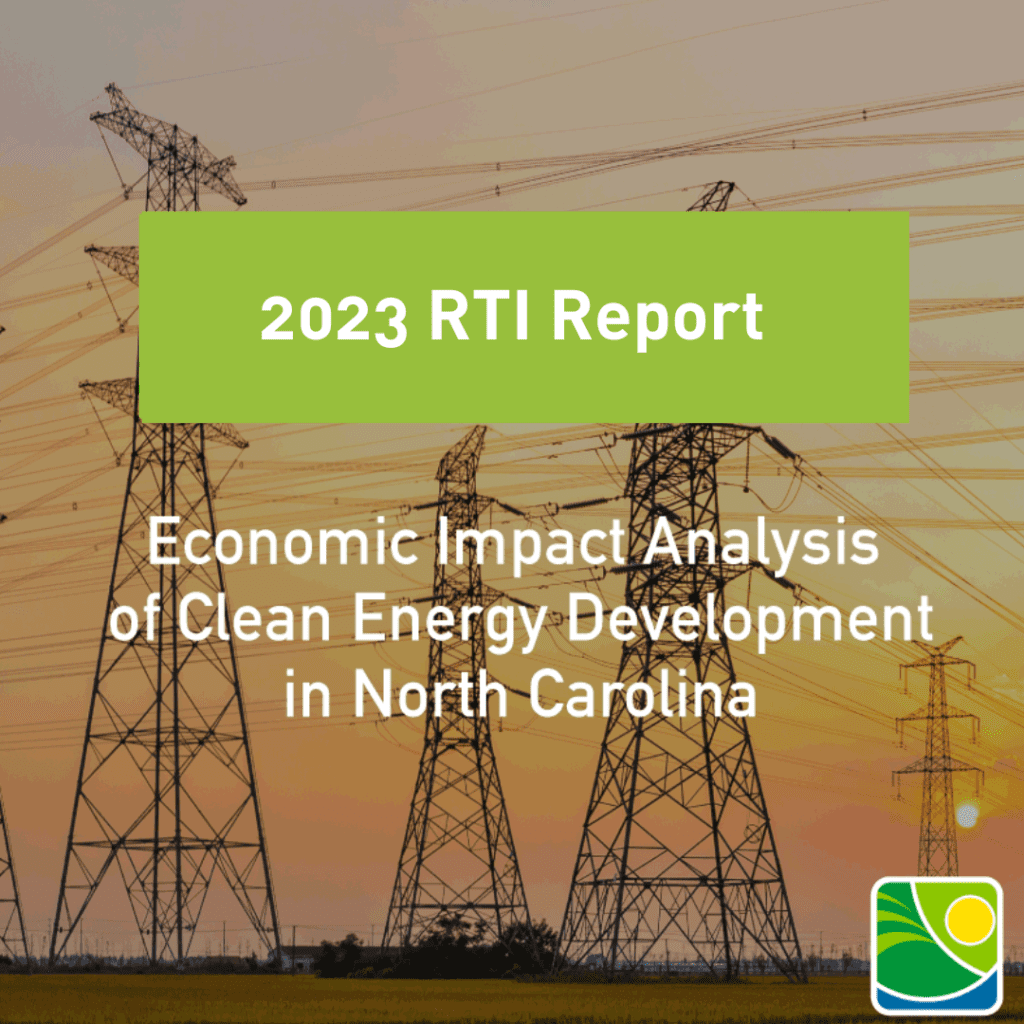When examining direct spending by technology, solar photovoltaic (PV) is by far the leading resource with almost 94% of the $28.2 billion in direct spending from 2007-2022 attributed to it. Additionally, in the 2 years since the last version of this report was released, clean energy project development benefits increased from $40.3 billion in 2020 to $59 billion in 2022. This not only demonstrates that clean energy is a key contributor to economic development in North Carolina, but also that the benefits are increasing exponentially every year. In terms of workforce development, the clean energy industry has supported 303,726 cumulative job years since 2007 (with cumulative job years referring to the number of jobs added up over a given set of years). Given the rapid pace of growth of clean energy, this number is only expected to continue increasing in the coming years.
When breaking down clean energy investments by region, North Carolina’s rural counties and legislative districts are receiving the most benefits. Duplin County came out on top with almost $930 million in investment in 2022, with Robeson, Halifax, Edgecombe, and Cumberland rounding out the top 5. For U.S. Congressional districts, District 1 in the Northeast led the charge by a wide margin with over $5.3 billion in clean energy development. Districts 3 (central coastal plain and Outer Banks), 7 (southeast), 8 (east of Charlotte), and 10 (west of Charlotte) completed the list of leading counties with investment amounts ranging from $1.3-$2.8 billion. Moving over to North Carolina Senate districts, Districts 3 (Bertie, Camden, Currituck, Gates, Halifax, Hertford, Martin, Northampton, Tyrrell, Warren), 9 (Bladen, Duplin, Jones, Pender, Sampson), 24 (Hoke, Robeson, Scotland), 11 (Franklin, Nash, Vance), and 1 (Carteret, Chowan, Dare, Hyde, Pamlico, Pasquotank, Perquimans, Washington) received the most dollars from clean energy and were the only Senate districts that broke $1 billion in investment each. Lastly, House Districts 27 (Halifax, Northampton, Warren), 4 (Duplin, Wayne), 1 (Chowan, Currituck, Dare, Perquimans, Tyrrell, Washington), 23 (Bertie, Edgecombe, Martin), and 5 (Camden, Gates, Herford, Pasquotank) constituted the highest clean energy investment earners on the other side of the legislature. Across the board, these results show that rural eastern North Carolina consistently experiences the greatest economic gains from the clean energy transition.
All in all, this study provides indisputable proof that North Carolina’s clean energy industry is contributing to the rapid, impressive economic growth and development of the state. As clean energy investments across the state increase in the coming years, the Economic Impact Analysis of Clean Energy Development in North Carolina report will continue to serve as a vital tool for better understanding the economic impacts of the clean energy transition.
For a more detailed breakdown of the data and the economic analysis, check out the full report and appendices on our 2023 RTI Report webpage.

